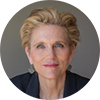Download PDF

Innovation in the ophthalmology space is accelerating. Until just a few years ago, glaucoma was treated with the same medications, lasers, and surgeries that we’d used for decades. Now there are new topical medications and an array of novel procedures to disrupt the well-worn algorithms of glaucoma care. The pipeline is in full flow.
It’s no different in retina and uveitis, and—most amazing of all—gene therapy for Leber congenital amaurosis forecasts an era of treatments for genetic causes of blindness. What’s more, our patients arrive with information about an emerging or expected new treatment and wonder if it’s right for them. How do we digest the deluge of innovation, assess new ideas, and provide explanations to our patients?
By reading EyeNet, of course.
Last month’s cover story was about alternatives for drug delivery in the anterior chamber; this month’s addresses new drug developments for the posterior chamber. Every product discussed in these two articles either is in development or was recently approved. And here’s the editorial conundrum: Many of the ophthalmologists with detailed knowledge about such products have also participated in the phase 1-3 trials.
How, then, do we discuss new and emerging products—medications, devices, or technology—when industry funds the research and the ophthalmologists we interview are the researchers? How does EyeNet, or any other ophthalmic publication, approach innovation?
I turned to Henry Jampel, editor-in-chief of Ophthalmology Glaucoma, because editors of peer-reviewed journals have an important role as gatekeepers of the scientific literature. “It’s our job to assess the quality of the research and hold early series trials to a high standard,” he said. Henry emphasized “the constant striving for our core value of providing unbiased evidence,” which is a surprisingly challenging process. The editors and the peer reviewers analyze the studies for methodological bias—and the editors must be on the lookout for conscious or unconscious bias among the peer reviewers. Henry also noted that even when the evidence is sound, it’s important that the abstract and the conclusion are consistent with the evidence. “It’s particularly important to keep the abstract bias free since this is the only part of the study that many people read,” he said.
Not even scientific data at the heart of a study are free of bias. In a recent editorial in Ophthalmology, Gerami Seitzman and Thomas Lietman pointed out the pitfalls of interpreting the data of randomized clinical trials for dry eye treatments.1 They discussed regression to the mean, placebo effect, and the natural course of dry eye disease—and, most interestingly, clinicians’ desire to “believe our actions are directly responsible for our patients’ improvements.” Specifically, as authors parse the data, internal motivations and beliefs can affect the analysis. Another exampleof unconscious bias is when physicians want to be friendly to innovation and, as Henry said, “can become echo chambers for the company.” A few naysayers are important, and a “smart company will find several physicians who critically analyze the early-stage proposals,” he said.
Although the challenges are different at a newsmagazine, EyeNet also works hard to be fair and unbiased. We often ask several experts to share their experience and perspectives on a topic. However, when we present innovative treatments, as in these two cover stories on drug delivery, the ophthalmologists who share their insights typically have financial interests related to the products under discussion. It’s a tension inherent in our system of drug and device development, because industry drives this stage of research.
The cutting edge is where, arguably, the most interesting developments lie, and it’s also where only those closest to the products can provide real news and valuable insight. Our goal: to approach this tension with attention to the facts, balanced questions, and full disclosure.
___________________________
1 Seitzman GD, Lietman TM. Ophthalmology. 2019;126(2)192-194.